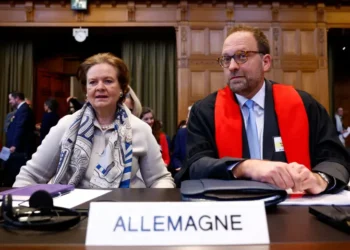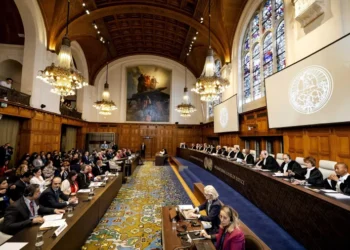Representatives of more than 500 partners, including the Members of the Food and Agriculture Organization of the United Nations (FAO), are gathering this week for the 10th Plenary Assembly of the Global Soil Partnership (GSP), which aims at improving fifty percent of the world’s soil by 2030.
Since its inception a decade ago, GSP has raised global and local awareness of sustainable soil management and guided policies to tackle erosion, salinization, and pollution to biodiversity conservation, carbon sequestration, and nutrient imbalances.
“Our goal going forward is to improve and maintain the health of at least 50 percent of the world’s soils by 2030, which is only possible with your strong support and solidarity”, FAO Director-General, Qu Dongyu added.
That goal, outlined in the new GSP Action Framework 2022-2030 to be adopted at the Plenary, is urgent given that one-third of the world’s soils today are in poor condition and suffer from degradation processes caused by unsustainable management practices.

Agricultural fertility doesn’t equate to soil health
Soil health cannot be measured by agricultural fertility alone. According to the Intergovernmental Technical Panel on Soils (ITPS), set up at the first GSP Plenary and comprising 27 top experts from around the world providing scientific advice, healthy soils are those “with the ability to sustain the productivity, diversity and environmental services of terrestrial ecosystems”.
The role of soils and their fertility is more important than ever to ensure food security for all and enable the transformation of agrifood systems to be more efficient, inclusive, resilient, and sustainable, said the FAO Director-General Qu Dongyu in his opening remarks.
Hailing the GSP’s achievements in advocacy, capacity development, data and mapping, and mobilizing investments, he urged participants to work to catalyze and scale up sustainable soil management solutions on the ground.
“Healthy soils provide safe and nutritious food and support healthy populations and ecosystems. Unhealthy soils, not only have lost their natural levels of biodiversity and productivity, but are less resilient, so prone to further degradation.”
Ronald Vargas, Secretary of the GSP.
While public interest in soil health has increased since FAO coordinated the 2015 International Year of Soil and World Soil Day in 2014, and due to numerous GSP initiatives, it is not adequately anchored in various international commitments through the new Action Framework, which includes measurable performance targets and proposes developing a global Soil Health Index, the GSP can act as an even stronger global voice to ensure those agreements translate into concrete actions on the ground. The Action Framework also aims to better coordinate with the three Rio Conventions, providing the role of soils in maintaining a healthy environment is appropriately acknowledged.
New Global Black Soil Distribution Map
A highlight of the first day of the Plenary will be the launch of the Global Black Soil Distribution Map, the fruit of a multi-year effort using a country-driven approach led by the Global Soil Partnership.
Participants also will discuss and review initiatives such as the Voluntary Guidelines for Sustainable Soil Management and SoiLEX, the International Code of Conduct for the Sustainable Use and Management of Fertilizers, RECSOIL: recarbonization of global soils, the World Soil Day 2022 campaign, and the Soil Doctors Programme.
Final preparations will be made for the Global Symposium on Soils for Nutrition, to held on 26-29 July 2022.
READ ALSO: Bank of Ghana’s Monetary Policy Committee Outcome Likely to Drive T-bills Trading- Analyst




















